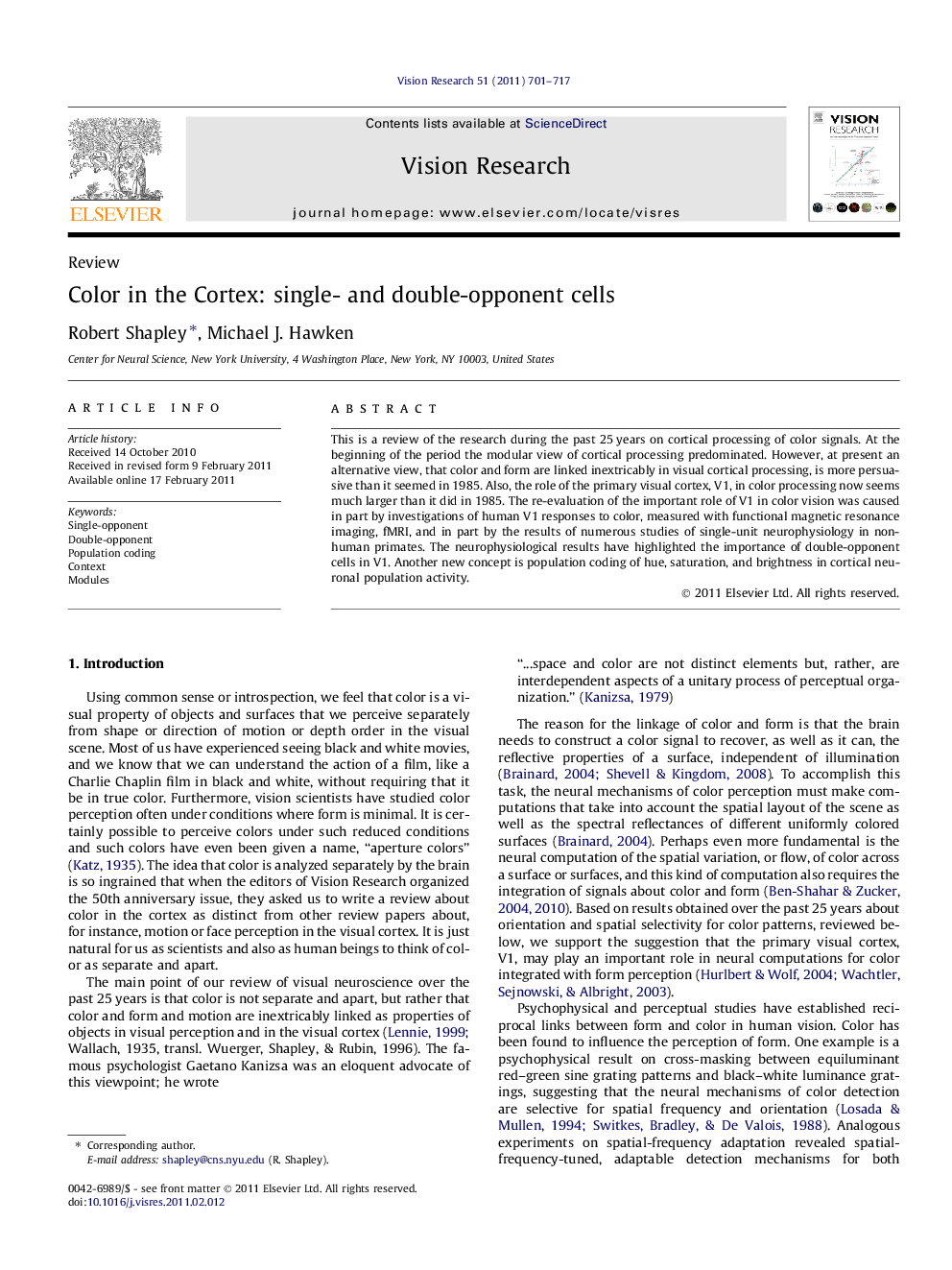| کد مقاله | کد نشریه | سال انتشار | مقاله انگلیسی | نسخه تمام متن |
|---|---|---|---|---|
| 4034175 | 1263433 | 2011 | 17 صفحه PDF | دانلود رایگان |

This is a review of the research during the past 25 years on cortical processing of color signals. At the beginning of the period the modular view of cortical processing predominated. However, at present an alternative view, that color and form are linked inextricably in visual cortical processing, is more persuasive than it seemed in 1985. Also, the role of the primary visual cortex, V1, in color processing now seems much larger than it did in 1985. The re-evaluation of the important role of V1 in color vision was caused in part by investigations of human V1 responses to color, measured with functional magnetic resonance imaging, fMRI, and in part by the results of numerous studies of single-unit neurophysiology in non-human primates. The neurophysiological results have highlighted the importance of double-opponent cells in V1. Another new concept is population coding of hue, saturation, and brightness in cortical neuronal population activity.
Research highlights
► This is a review of the research during the past 25 years on cortical processing of color signals.
► Twenty-five years ago a modular view of cortical processing predominated.
► Currently, an alternative view, that color and form are linked inextricably in visual cortical processing, is more persuasive than it seemed in 1985.
► The role of the primary visual cortex, V1, in color processing now seems much larger than it did in 1985.
► The new neurophysiological results have highlighted the importance of double-opponent cells in V1.
► Another new concept is population coding of hue, saturation, and brightness in cortical neuronal population activity.
Journal: Vision Research - Volume 51, Issue 7, 13 April 2011, Pages 701–717